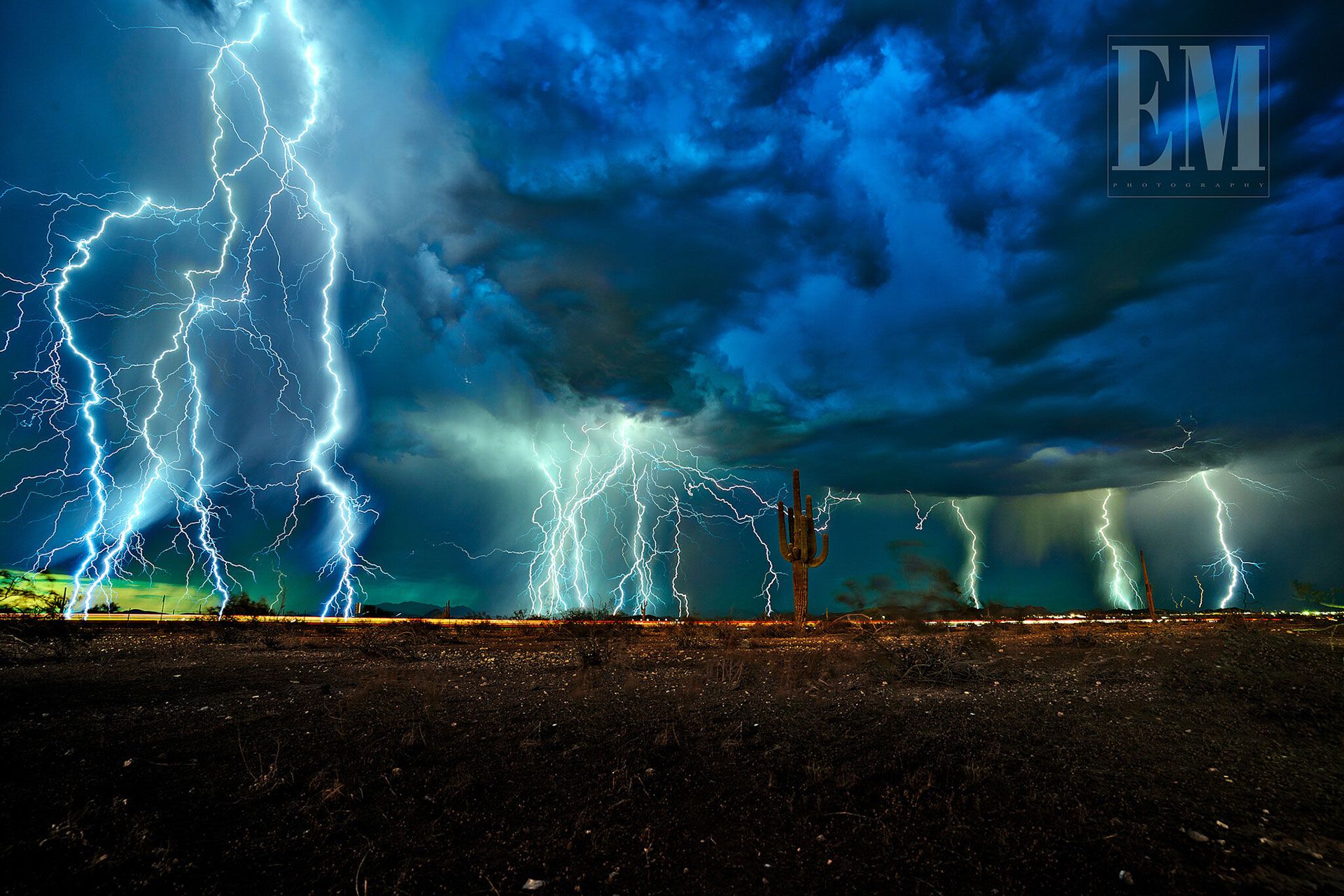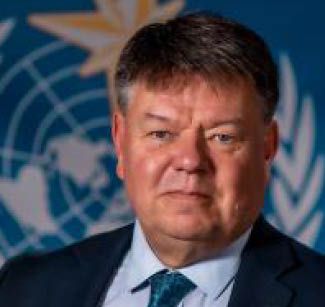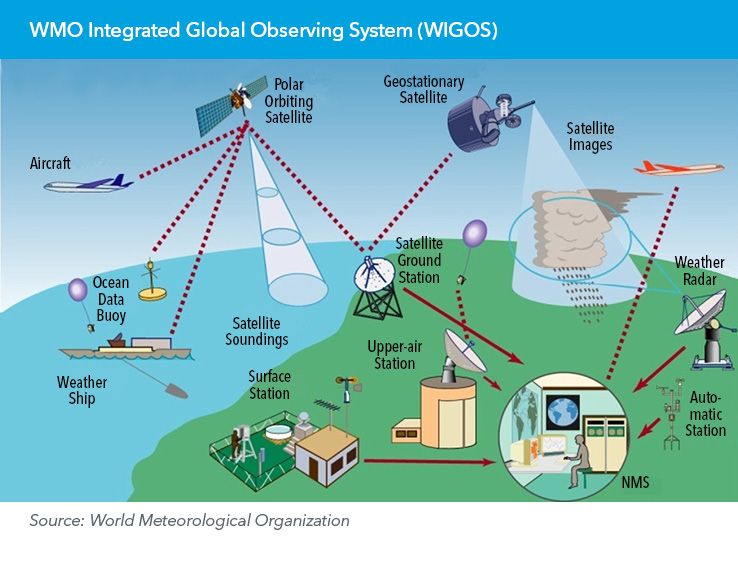
Protecting Earth-observation systems at WRC-23


Petteri Taalas, Secretary-General, World Meteorological Organization
Radio-frequency bands free from harmful interference are a key requirement for all Earth-observation systems. In fact, access to the radio-frequency spectrum is critical to the meteorological and hydrological infrastructure that underpins weather and related environmental services worldwide. Satellites, weather radar, radiosondes, hydrological observing systems, and drifting buoys all operate based on radio or microwave transmissions.
The safety of life and property depends on weather and environmental forecasts.
Extended warning times for severe events enable citizens, civil authorities and first responders to act.
Longstanding collaboration between the World Meteorological Organization (WMO) and the ITU Radiocommunication Sector (ITU–R — one of three Sectors of the International Telecommunication Union) has cemented the growing synergies between meteorology, early warning systems, data and digital technologies.

WMO, through its Expert Team on Radio Frequency Coordination (ET-RFC), has produced a position statement on the agenda for ITU’s upcoming World Radiocommunication Conference (WRC‑23).
From a meteorological and climate-monitoring perspective, the most critical issues that require support from national administrations are concerned with the measurement of sea surface temperature and the observations of space weather.
Continuity of SST measurements: consequential to agenda item 1.2
Sea surface temperature (SST) is a vital component of the climate system, with a major influence on exchanges of energy, momentum and gases between oceans and the atmosphere. SST, as one of the main drivers of ocean circulation, is crucial for numerical weather and ocean prediction models.
The 6/7 gigahertz (GHz) frequency range — corresponding to peak SST sensitivity — is currently being utilized for passive ocean remote sensing. These are the only SST measurements that can “see” through clouds.
The Radio Regulations acknowledge the use of the 6425–7075 megahertz (MHz) and 7075–7250 MHz frequency bands by the Earth exploration-satellite service (EESS). Footnote 5.458 highlights that administrations should bear in mind the spectrum needs for EESS (passive) sensors in future planning for that frequency range. But this does not constitute a spectrum allocation and provides no protection to SST measurement operations.
WRC‑23 agenda item 1.2 proposes the identification of frequency bands for International Mobile Telecommunications (IMT) within the 6/7 GHz range, even though ITU–R studies demonstrate that SST measurements could be severely hindered by such deployment. To mitigate this risk, WMO has identified other potential bands for SST measurement that could be used in combination with the 6/7 GHz range.
To ensure long-term continuity, WMO urges administrations to consider new primary EESS (passive) allocations in the 4.2–4.4 GHz and 8.4–8.5 GHz bands for SST measurement. Notably, these possible new primary EESS (passive) allocations would not claim protection from existing services in these bands.
Recognition of space weather: agenda item 9.1a
Space-weather observations from ground-based and space-based systems are essential for the detection of solar activity. Solar events can cause severe disruptions to critical infrastructure both on Earth and in space, resulting in radio blackouts, damage to satellites, perturbations in power grids, and increased radiation exposure on trans-polar aircraft routes.
Despite the need to anticipate hazardous space weather events, the current Radio Regulations contain no recognition or provisions related to space-weather observations. WRC‑23 agenda item 9.1a considers appropriate recognition of space weather sensors in the Radio Regulations. Under WRC‑23 agenda item 10, a new agenda item for WRC‑27 will be discussed to ensure the protection of space weather sensors in some frequency bands, without placing constraints on incumbent services.
To protect space-weather sensor operations, WMO is advocating for a two-step approach at WRC‑23:
Step 1
Define space weather in the context of the Radio Regulations and associate space weather with the appropriate “radiocommunication service” under which space-weather systems may operate — namely the meteorological aids (space weather) service, or in short: MetAids (space weather).
Step 2
Develop a new WRC‑27 agenda item proposing new MetAids (space weather) allocations in frequency bands used by operational space-weather sensors that require protection.
Safeguarding critical spectrum
The radio-frequency spectrum is a finite resource, with emerging technologies continually raising demand. Earlier this year, the 19th World Meteorological Congress (Cg‑19) expressed serious concern over the threat to crucial radio-frequency bands, with Resolution 31 from the conference calling for safeguards.
The meteorological community appeals to ITU members to give due consideration to WMO’s requirements for radio-frequency allocations and regulatory provisions at WRC‑23.
ITU Radio Regulation No. 5.340 prohibits all radio emissions in specified frequency bands between 1400 MHz and 252 GHz. Weather, water and climate research and operations all depend on preserving these as emission-free bands.
At stake is the availability of spectrum for passive sensing of the Earth’s atmosphere and other environmental variables. Only by working together can we — the global meteorological and radiocommunication communities — maintain and improve our future capacity for Earth observation and the vital services that depend on it.
Download your copy of the ITU News Magazine: Science services.
Header image credit: Edward Mitchell (WMO 2023 Calendar Competition)
